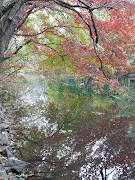After enduring travel in an army convoy that rattled over rutted roads for two months navigating from coast to coast in 1919, Dwight Eisenhower’s dream was a national network of paved highways. As president, Ike signed an order in 1956 to build a system of superhighways. Little did he know how that would turn out.
A drive across the USA recently in interstate summer traffic drew intense longing for relief from multiple lanes of hard-charging motorists. One incredible highway scene after another loomed up and disappeared into the rearview mirror. Traffic slowed only for severe congestion, lanes closed for road repairs, and accidents. On a California freeway, the Sunday morning of Labor Day weekend, a beleaguered-looking military convoy crept along the breakdown lane, the helmet-clad troops warily watching a relentless, churning river of cars, vans, SUVs, motorcycles, campers, pickup trucks, utility trucks, garbage trucks, car carriers, rental trucks, 16-wheeler trailer-trucks whooshing past inches from their machinegun mounts.
Squeezed amid careening caravans of double-trailer, long-haul truckers and family campers towed by pickup trucks racing in packs lunging for lead position at 70 miles-per-hour-plus, I was drawn to old-fashioned roadside attractions to preserve some sanity. Lot of roadside crosses in Indiana, for instance. Either there’s a great revival of evangelical Christianity or a horrendous toll of traffic fatalities. But I was driving too fast to stay out of the path of a herd of trucks to figure it out.
It was intriguing to find out that Jesse James hid out in a cave in Missouri. Roadside signs touting that piece of history flashed past, as my speedometer and the trucks hammering on my back bumper topped 80 miles per hour. Didn’t catch the name of the cave. Signs for kayaking in the Ozarks similarly flashed past. Just so with the first sight of a cattle ranch in Oklahoma, an old oil well in Texas, the Petrified Forest in Arizona.
I barely remember New Mexico on the first pass. I drove across the entire state amid a stampede of trucks and campers tearing up the interstate at a breakneck clip, mileposts zipping past in the blink of an eye. Out of the corners of my frazzled eyes, picturesque mesas peeked up in the distance.
But a sight in Arizona made me slam on the brakes and grab the camera. Fortunately, there wasn’t a truck on my bumper, a rarer occurrence on the two-lane old road to the less-visited north side of the Grand Canyon. What caught my attention was a sign on the edge of a remote village. Next to a painted silhouette of soldiers were these words in red letters: “BRING THEM HOME.” Nearby was an older sign that set the scene: “Echo Cliffs Veterans Memorial Park, Cedar Ridge, Arizona.”
After that, I looked for every opportunity to get off the interstate and take an old road to where I was going for the day. And in traveling from coast to coast and back, I saw a lot more of America—golden meadows of mountain wildflowers, fascinating small town landmarks, kayakers in a Colorado River gorge—the further I got off the highway.
Subscribe to:
Post Comments (Atom)








1 comment:
Dear Jan
I have to confess that although I am a loyal fan of your blog I have never taken the time to slow down from my own 80 mph metaphoric road speed to directly appreciate the “markers “and that which they reference in your writing.
I thought you made a powerful and compassionate plea for all of us to take the time – to slow down- and appreciate what is around us- the beauty and the beasts. And with the beginning of fall upon us (Veterans Day is November 11) and the wars still raging, slowing down to consider the plight of our warriors must become a caring responsibility for all of us.
Post a Comment